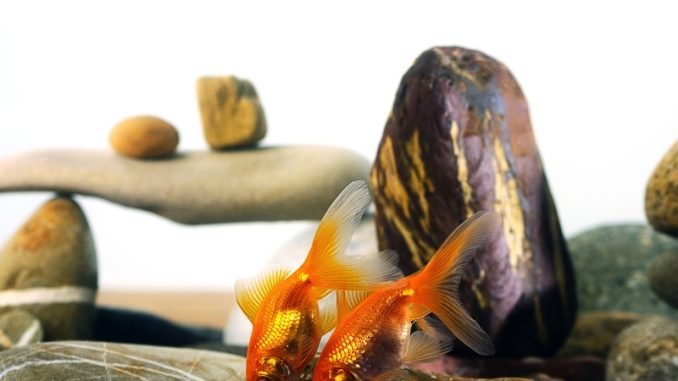
Do goldfish mate? It’s a common question for pet fish enthusiasts, and one that can be difficult to answer. Goldfish mating habits vary from species to species, so understanding how they interact with each other is key when it comes to determining whether or not your tank will become the happy home of a new brood. If you’re interested in learning more about do goldfish mate and what goes into successful breeding season preparation, this blog post has all the information you need. We’ll cover everything from preparing for breeding success to knowing what happens after spawning occurs – let’s dive right in.
Table of Contents:
Goldfish Mating Habits
Goldfish mating habits vary depending on the species, but generally involve a breeding season, courtship behavior, and spawning process.
Breeding Season:
Goldfish become more active during their breeding season which usually occurs in spring or summer when water temperatures are between 65-72°F (18-22°C). During this time they may start to display courtship behaviors such as chasing each other or swimming in circles.
Courtship Behavior:
Courtship behavior is an important part of goldfish mating. Male goldfish will often chase female goldfish around the tank while displaying colorful fins and flaring their gills. The male will also release pheromones into the water to attract females for mating. If a female is interested she will respond by allowing him to swim close to her and nudge her body with his snout.
When ready to spawn, the female releases her eggs which are then fertilized by the male who has released milt containing spermatozoa into the water column. After spawning, both fish should be removed from the tank so that they do not eat any of their own eggs or fry once hatched as this can significantly reduce survival rates.
Preparing for Breeding
When preparing for goldfish breeding, it is important to set up an appropriate tank with the correct water parameters and feeding habits. The tank should be large enough to accommodate both parents and their fry, and should have a temperature of around 70-75°F (21-24°C). This will ensure that there is plenty of space for the fish to swim freely without overcrowding or stress. It is also important to make sure that the tank has adequate filtration and aeration systems in place so that ammonia levels are kept low.
Tank Setup
In order to successfully breed goldfish, it is essential to create a suitable environment for them by setting up an appropriate tank. A 20 gallon aquarium would be ideal as this size allows ample room for both parents and their fry while still providing some privacy from other tanks or distractions in the area. Additionally, it’s best practice to provide hiding places such as rocks or plants where they can feel secure when spawning takes place. Furthermore, if you plan on keeping more than one pair of goldfish in the same tank then you must provide additional dividers so each pair can spawn separately without interference from other pairs.
Water Parameters
The water parameters need special attention when breeding goldfish since these fish require specific conditions in order for successful mating and egg production. For example, pH levels between 7.0-7.5 are ideal along with hardness levels between 5-15 dGH; any deviation outside of these ranges could cause health issues during spawning season which could lead to poor egg production or even death among your fish population. Therefore it’s important that you test your water regularly using a reliable testing kit before attempting any kind of breeding activity within your aquarium setup .
Feeding Habits
After the Spawning Process
Caring for Fry:
After the spawning process is complete, it is important to care for the fry properly in order to ensure their survival. This includes providing them with plenty of food such as newly hatched brine shrimp or microworms. It is also important to maintain good water quality by performing regular water changes and monitoring pH levels and other parameters regularly. Additionally, you should keep an eye out for any signs of disease or parasites that may be present in the tank.
Separating Parents from Fry:
Once the fry have been born, it is essential to separate them from their parents in order to prevent inbreeding. This can be done by either transferring them into a separate tank or using a breeding net within the same tank. If possible, try to provide some sort of cover such as plants or rocks so that they feel secure while growing up.
In addition to separating parents from fry, there are several other steps you can take in order to prevent inbreeding among your fish population. One way is by purchasing new fish from outside sources on a regular basis which will help introduce fresh genes into your aquarium environment and reduce the chances of genetic disorders occurring due to close relatives mating with each other over time. You should also avoid keeping too many related individuals together at once as this increases the risk of health problems arising due to increased competition for resources between closely related individuals within small populations.
Conclusion
In conclusion, do goldfish mate? Yes. Goldfish mating habits are quite complex and require a lot of preparation. If you’re looking to breed your own goldfish, make sure that you have the right environment and supplies ready before attempting to spawn them. With some patience and dedication, it is possible for goldfish owners to successfully breed their fish. Good luck.
If you are looking for information on how to successfully mate goldfish, look no further! Fishkeepingworld is the perfect resource. We provide detailed instructions and advice from experienced fishkeepers so that your experience will be a success. Our goal is to ensure all pet owners have access to reliable resources in order to keep their beloved pets healthy and happy. Don’t wait – get started today with our comprehensive guide on how goldfish mate!

Be the first to comment